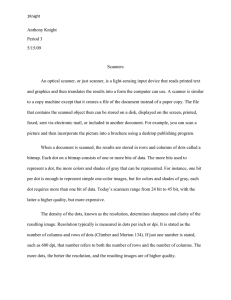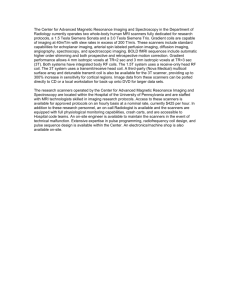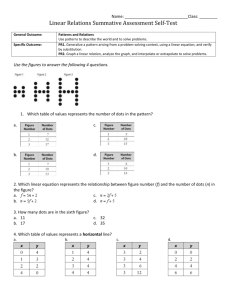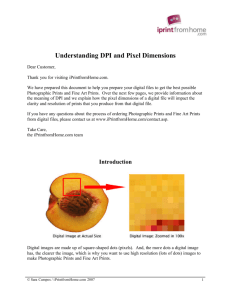scanner
advertisement
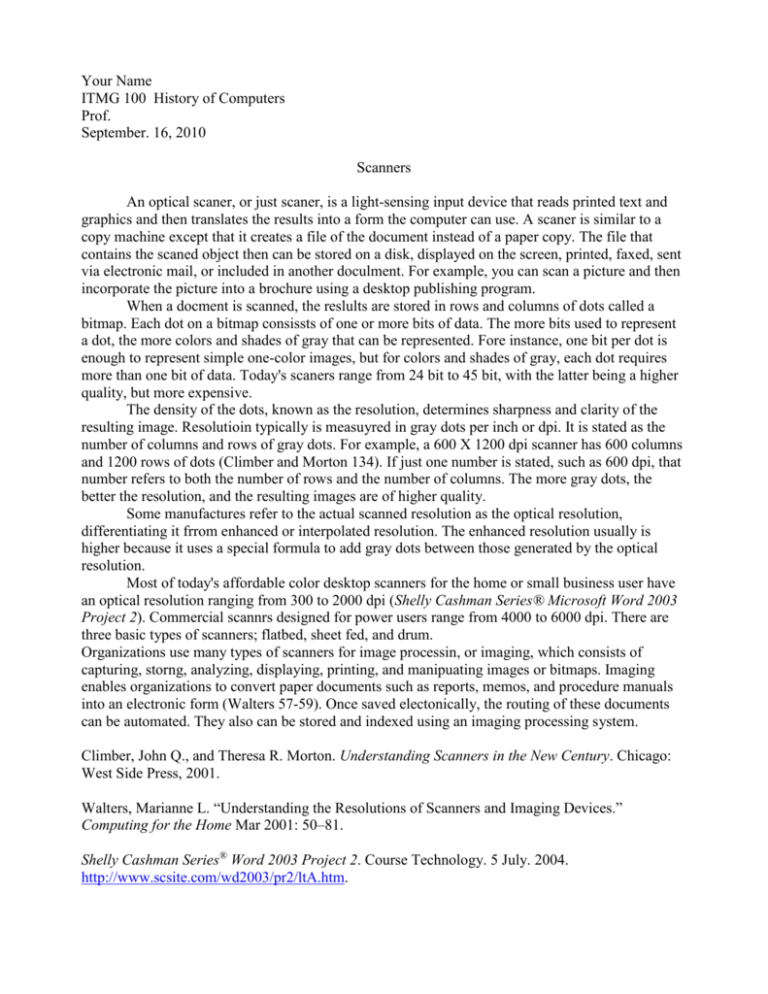
Your Name ITMG 100 History of Computers Prof. September. 16, 2010 Scanners An optical scaner, or just scaner, is a light-sensing input device that reads printed text and graphics and then translates the results into a form the computer can use. A scaner is similar to a copy machine except that it creates a file of the document instead of a paper copy. The file that contains the scaned object then can be stored on a disk, displayed on the screen, printed, faxed, sent via electronic mail, or included in another doculment. For example, you can scan a picture and then incorporate the picture into a brochure using a desktop publishing program. When a docment is scanned, the reslults are stored in rows and columns of dots called a bitmap. Each dot on a bitmap consissts of one or more bits of data. The more bits used to represent a dot, the more colors and shades of gray that can be represented. Fore instance, one bit per dot is enough to represent simple one-color images, but for colors and shades of gray, each dot requires more than one bit of data. Today's scaners range from 24 bit to 45 bit, with the latter being a higher quality, but more expensive. The density of the dots, known as the resolution, determines sharpness and clarity of the resulting image. Resolutioin typically is measuyred in gray dots per inch or dpi. It is stated as the number of columns and rows of gray dots. For example, a 600 X 1200 dpi scanner has 600 columns and 1200 rows of dots (Climber and Morton 134). If just one number is stated, such as 600 dpi, that number refers to both the number of rows and the number of columns. The more gray dots, the better the resolution, and the resulting images are of higher quality. Some manufactures refer to the actual scanned resolution as the optical resolution, differentiating it frrom enhanced or interpolated resolution. The enhanced resolution usually is higher because it uses a special formula to add gray dots between those generated by the optical resolution. Most of today's affordable color desktop scanners for the home or small business user have an optical resolution ranging from 300 to 2000 dpi (Shelly Cashman Series® Microsoft Word 2003 Project 2). Commercial scannrs designed for power users range from 4000 to 6000 dpi. There are three basic types of scanners; flatbed, sheet fed, and drum. Organizations use many types of scanners for image processin, or imaging, which consists of capturing, storng, analyzing, displaying, printing, and manipuating images or bitmaps. Imaging enables organizations to convert paper documents such as reports, memos, and procedure manuals into an electronic form (Walters 57-59). Once saved electonically, the routing of these documents can be automated. They also can be stored and indexed using an imaging processing system. Climber, John Q., and Theresa R. Morton. Understanding Scanners in the New Century. Chicago: West Side Press, 2001. Walters, Marianne L. “Understanding the Resolutions of Scanners and Imaging Devices.” Computing for the Home Mar 2001: 50–81. Shelly Cashman Series® Word 2003 Project 2. Course Technology. 5 July. 2004. http://www.scsite.com/wd2003/pr2/ltA.htm.

